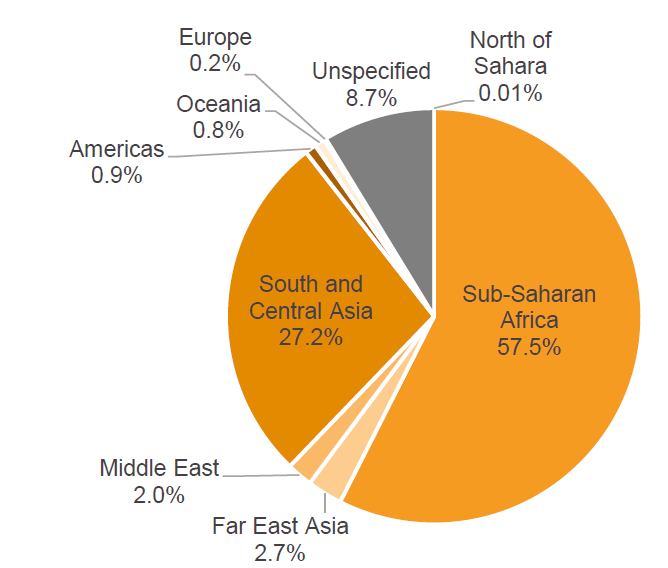Trends in international development assistance to combat pneumonia
This factsheet provides an overview of the latest trends in international development assistance related to pneumonia. Where and how is assistance targeted?
DownloadsIntroduction
Pneumonia, a form of acute respiratory infection that affects the lungs, is the single largest infectious cause of death in children worldwide. Many cases of pneumonia can be treated by antibiotics (bacterial pneumonia) and prevented by immunisation, [1] adequate nutrition and by addressing environmental factors. However, according to the World Health Organization, only one third of children with pneumonia receive the antibiotics they need. [2]
Pneumonia is closely linked to poverty, as 99% of child deaths from pneumonia occur in developing countries, disproportionately affecting the most vulnerable children. [3] Predictions made before the spread of Covid-19 estimated that as many as 6.3 million children under the age of five could die from pneumonia between 2020 and 2030. [4] Deaths are likely to be highest in Nigeria (1.4 million), India (880,000), the Democratic Republic of the Congo (350,000) and Ethiopia (280,000).
In comparison with other infectious diseases, progress in reducing deaths due to pneumonia in children under five has been significantly slower. Since 2000, the mortality of children under five due to pneumonia has declined by 54%, while deaths due to diarrhoea have decreased by 64% and are now almost half the number of pneumonia deaths. [5] With the current Covid-19 pandemic, investments in fighting pneumonia have never been more crucial, especially to strengthen health systems in countries that lack the facilities to prevent, diagnose and treat pneumonia.
This factsheet provides an overview of international development assistance (consisting of official development assistance (ODA) and philanthropic giving) related to pneumonia including projects focused on prevention and treatment. Key findings from this analysis show that:
- International development assistance to pneumonia has halved since a peak of US$1 billion in 2015.
- Both ODA and philanthropic giving to combat pneumonia have fallen in recent years.
- More than half of all international development assistance to pneumonia was disbursed to countries in sub-Saharan Africa.
- High-burden countries are generally well targeted by pneumonia international development assistance.
- International development assistance for pneumonia has remained much smaller than for HIV/Aids and malaria.
- Research and development accounts for the largest share of non-vaccine pneumonia assistance.
The data available covers 2007−2018 and is broken down to show trends in funding across this period by region, by country, in comparison with other selected health sub-sectors and non-vaccine funding. The data in this factsheet is derived from pneumonia-relevant key-word searches in ODA data from the Organisation for Economic Cooperation and Development (OECD), as pneumonia is not a specific sectoral field within that dataset.
Definitions
Official development assistance (ODA)
The OECD Development Assistance Committee (DAC) defines ODA as “those flows to countries and territories on the DAC List of ODA Recipients and to multilateral development institutions which are:
- provided by official agencies, including state and local governments, or by their executive agencies; and
-
each transaction of which:
- is administered with the promotion of the economic development and welfare of developing countries as its main objective; and
- are concessional in character.” [6]
Philanthropic giving
Philanthropic giving, a constituent of private development assistance , includes activities from philanthropic foundations that report to the OECD DAC. The OECD DAC includes project-level information from more than 30 of the largest foundations working for development. These foundations report data on their grant making and programme-related investments for development following the same statistical standards and definitions as ODA. The data on philanthropic giving in this factsheet does not include individual giving, volunteerism and other forms of PDA from organisations who do not report their activities to the OECD DAC.
An overview of international development assistance to combat pneumonia
International development assistance to pneumonia has halved since a peak of US$1 billion in 2015
Figure 1a: Pneumonia international development assistance, 2007−2018
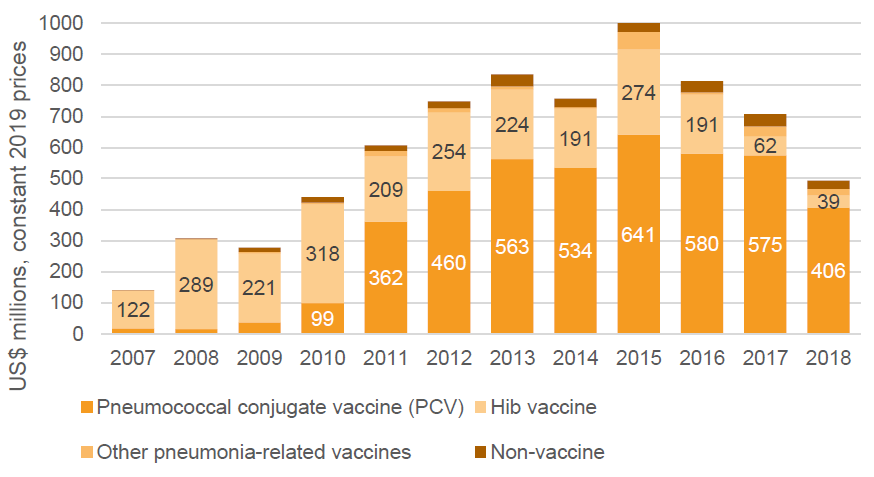
Figure 1a: Pneumonia international development assistance, 2007−2018
Source: Development Initiatives based on OECD CRS.
Notes: Data is gross disbursements of ODA and private development assistance reported in the Organisation for Economic Co-operation and Development's (OECD) Creditor Reporting System (CRS). Categories of pneumonia expenditure were classified using descriptive information on aid activities within the OECD CRS.
- Between 2007 and 2018, international development assistance for pneumonia increased from US$140 million to US$494 million, totalling US$7.1 billion over the period. US$6.5 billion of this total was in the form of ODA and US$626 million was in the form of philanthropic giving.
- International development assistance to pneumonia has fallen over consecutive years since reaching its peak of US$1 billion in 2015 and stood at US$494 million in 2018.
- More than 96% of assistance during this period was to finance pneumonia-fighting vaccines in low resource settings, especially the pneumococcal conjugate and Hib vaccines. Non-vaccine assistance represented 3.9%.
- Funding specifically focusing on the Hib vaccine was consistent until 2015 and has fallen sharply since then, dropping from $274 million in 2015 to $39 million in 2018. This may reflect a decrease in the price of the vaccine as well as increased inclusion of the vaccine in routine immunisation programmes in-country.
Both ODA and philanthropic giving to combat pneumonia have fallen in recent years
Figure 1b: Pneumonia international development assistance by flow type, 2007−2018
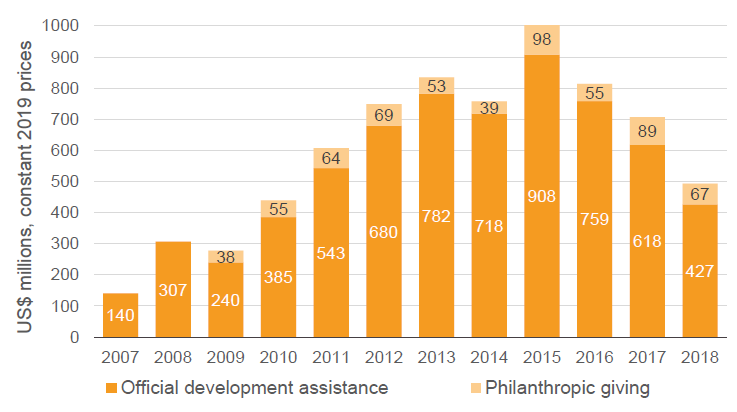
Figure 1b: Pneumonia international development assistance by flow type, 2007−2018
Source: Development Initiatives based on OECD CRS.
Notes: Data is gross disbursements of ODA and private development assistance reported in the Organisation for Economic Co-operation and Development's (OECD) Creditor Reporting System (CRS).
- Both ODA and philanthropic giving peaked in 2015, at US$908 million and US$98 million respectively, and decreased to US$427 million and US$67 million respectively by 2018.
- Gavi is the major donor of ODA to pneumonia – Gavi’s disbursements relevant to pneumonia peaked in 2015 at US$889 million (98% of ODA to pneumonia that year). By 2018 they had fallen to US$396 million, less than half of 2015 levels (and representing 93% of ODA to pneumonia that year).
More than half of all international development assistance to pneumonia was disbursed to countries in sub-Saharan Africa
- Between 2007 and 2018 more than half (57%) of international development assistance to pneumonia was disbursed to countries within Africa.
- Just under a third (32%) was disbursed to the Asia region, the vast majority of which went to South and Central Asian countries.
- 8.7% of the total was reported to regions not specified, a category including expenditure on research within donor countries. That proportion has also grown slightly over the period from 8% in 2008 to 12% in 2018, though it has varied significantly over the years from a high of 15% in 2011 to a low of 3% in 2014.
- The share of total to Asia has increased from 6% in 2007 to 30% in 2008, rising to a high of 39% in 2017 before falling to 33% in 2018. The share to Africa fell from 72% to 54% over the 2007−2018 period.
- 57% of philanthropic giving to pneumonia was spent within the unspecified region due in large part to funding to research from the Bill & Melinda Gates Foundation relevant to pneumonia.
High-burden countries are generally well targeted by pneumonia international development assistance
Figure 3: Top 20 recipients of international development assistance targeted to pneumonia, 2007−2018
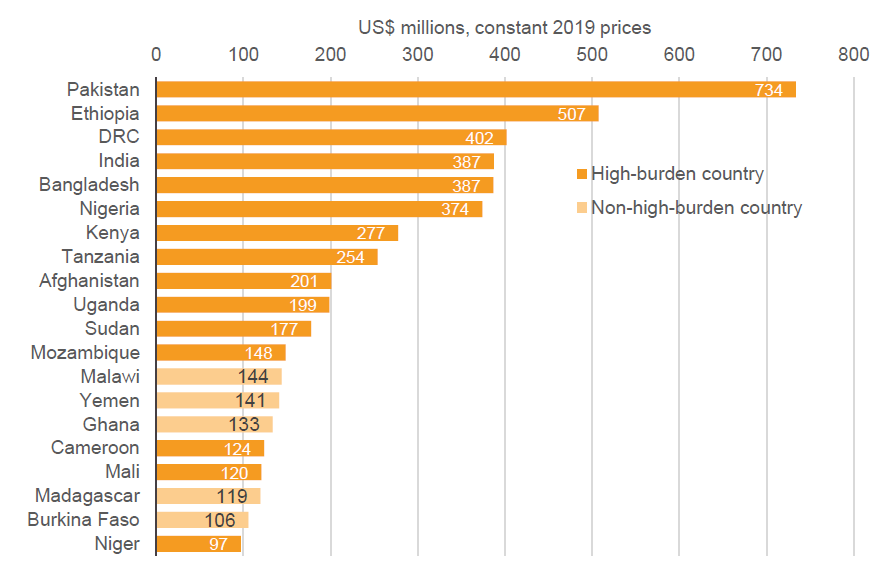
Figure 3: Top 20 recipients of international development assistance targeted to pneumonia, 2007−2018
Source: Development Initiatives based on OECD CRS and UNICEF.
Notes: The high-burden countries include 22 countries with the highest absolute number of pneumonia deaths and the top 14 countries in terms of pneumonia-specific mortality rates (15 of which are shown in the figure). UNICEF analysis based on World Health Organization and Maternal and Child Epidemiology Estimation Group interim estimates produced in September 2019. DRC = Democratic Republic of Congo.
- The 12 largest recipients of pneumonia international development assistance during 2007−2018 are all high-burden pneumonia countries − 8 of these are least developed countries while 4 are not.
- Pakistan, Ethiopia, Democratic Republic of the Congo, India and Bangladesh were the top five recipients during 2007−2018.
- Between 2007 and 2018, Pakistan received 1.4 times as much in pneumonia ODA compared to the next largest recipient (Ethiopia) − US$734 million compared to US$507 million.
- Overall, three-quarters of country allocable pneumonia international development assistance between 2007 and 2018 was allocated to high-burden countries.
- Eleven high-burden countries were outside of the top 30 recipients, five of which were outside of the top 50 recipients − Somalia, Haiti, Philippines, Comoros and China.
International development assistance for pneumonia has remained much smaller than for HIV/Aids and malaria
Figure 4: Comparison of international development assistance to pneumonia relative to other leading infectious diseases (HIV/Aids and malaria)
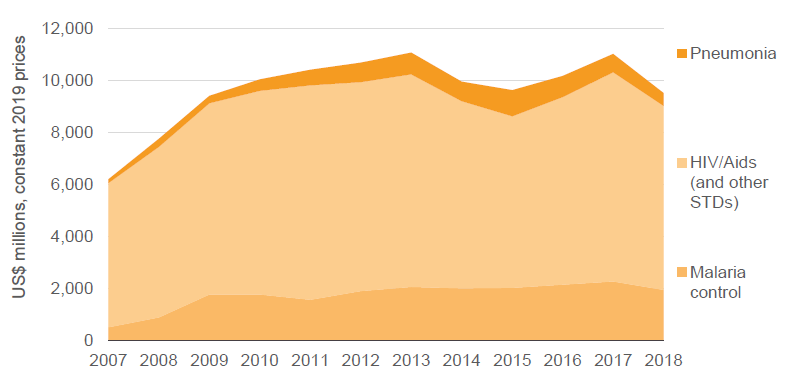
Figure 4: Comparison of international development assistance to pneumonia relative to other leading infectious diseases (HIV/Aids and malaria)
Source: Development Initiatives based on OECD CRS.
Notes: Data is in constant 2019 prices. 'HIV/AIDS (and other STDs)' and 'Malaria control' are Organisation for Economic Co-operation and Development's Development Assistance Committee sectors.
- Between 2007 and 2018, international development assistance allocated to HIV/Aids and malaria was US$88.0 billion and US$20.7 billion respectively, while US$7.1 billion was targeted to pneumonia.
- Of the total US$115.9 billion, HIV/Aids received 76%, malaria 18%, and pneumonia 6%.
- The share disbursed to pneumonia has increased over time from 2% in 2007 to 5% in 2018, although this is down from a high of 10% in 2015.
Research and development accounts for the largest share of non-vaccine pneumonia assistance
Figure 5: Non-vaccine pneumonia international development assistance interventions by type, 2007−2018
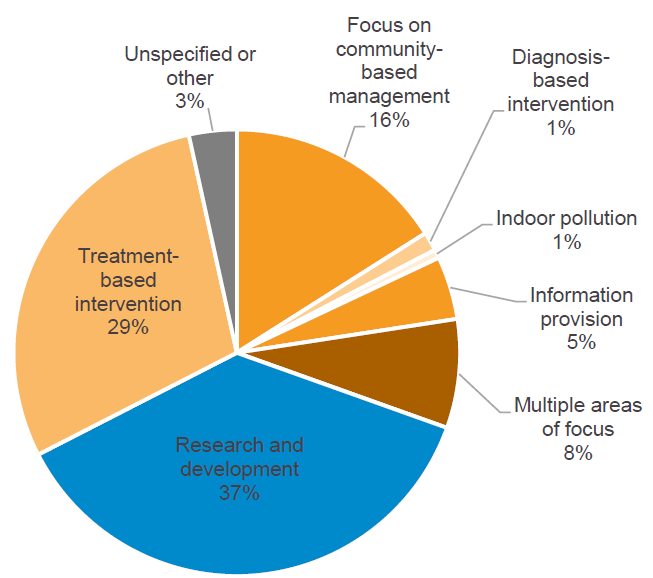
Figure 5: Non-vaccine pneumonia international development assistance interventions by type, 2007−2018
Source: Development Initiatives based on OECD CRS.
Notes: Categories of non-vaccine pneumonia development assistance were classified using descriptive information on aid activities within the Organisation for Economic Co-operation and Development's (OECD) Creditor Reporting System (CRS).
- The descriptive information on non-vaccine pneumonia-relevant projects in the OECD Creditor Reporting System allows a subjective review to estimate the type of intervention being made.
- Research and development accounted for over a third (37%, US$101.8 million) of non-vaccine pneumonia-focused international development assistance.
- 29% of disbursements over 2007−2018 (US$80.1 million) indicated a focus on pneumonia treatment.
- Aid supporting community-based management interventions with a stated focus on pneumonia made up 16% of the total.
Downloads
Notes
-
1
World Health Organization. Vaccines to prevent pneumonia and improve child survival. Available at: www.who.int/bulletin/volumes/86/5/07-044503/en/ (accessed 7 August 2020)Return to source text
-
2
World Health Organization, 2019. Pneumonia. Available at www.who.int/news-room/fact-sheets/detail/pneumoniaReturn to source text
-
3
Save the Children, 2017. Fighting for Breath. Available at: www.savethechildren.org.uk/what-we-do/policy-and-practice/our-featured-reports/fighting-for-breathReturn to source text
-
4
UNICEF, 2020. 9 million children could die in a decade unless world acts on pneumonia, leading agencies warn. Available at: www.unicef.org/press-releases/9-million-children-could-die-decade-unless-world-acts-pneumonia-leading-agencies (accessed 7 August 2020)Return to source text
-
5
UNICEF, 2019. A child dies of pneumonia every 39 seconds. Available at: https://data.unicef.org/topic/child-health/pneumonia/#:~:text=A%20child%20dies%20of%20pneumonia,This%20includes%20over%20153%2C000%20newborns (accessed 7 August 2020)Return to source text
Related content
Aid spent on health: ODA data on donors, sectors, recipients
The latest data on trends in ODA to health. Who are the major donors, and where is health ODA expenditure disbursed, at recipient and subsector level?
Targeting health ODA to need: Spending by country and disease
Is health ODA spent where need is greatest? Our analysis considers aid in countries facing developmental challenges, and diseases that cause the most deaths.
Coronavirus and aid data: What the latest DAC data tells us
How might the coronavirus pandemic impact aid spending? DI presents analysis of preliminary ODA (aid) data for 2019. Our briefing shows how much was given and in what form.
